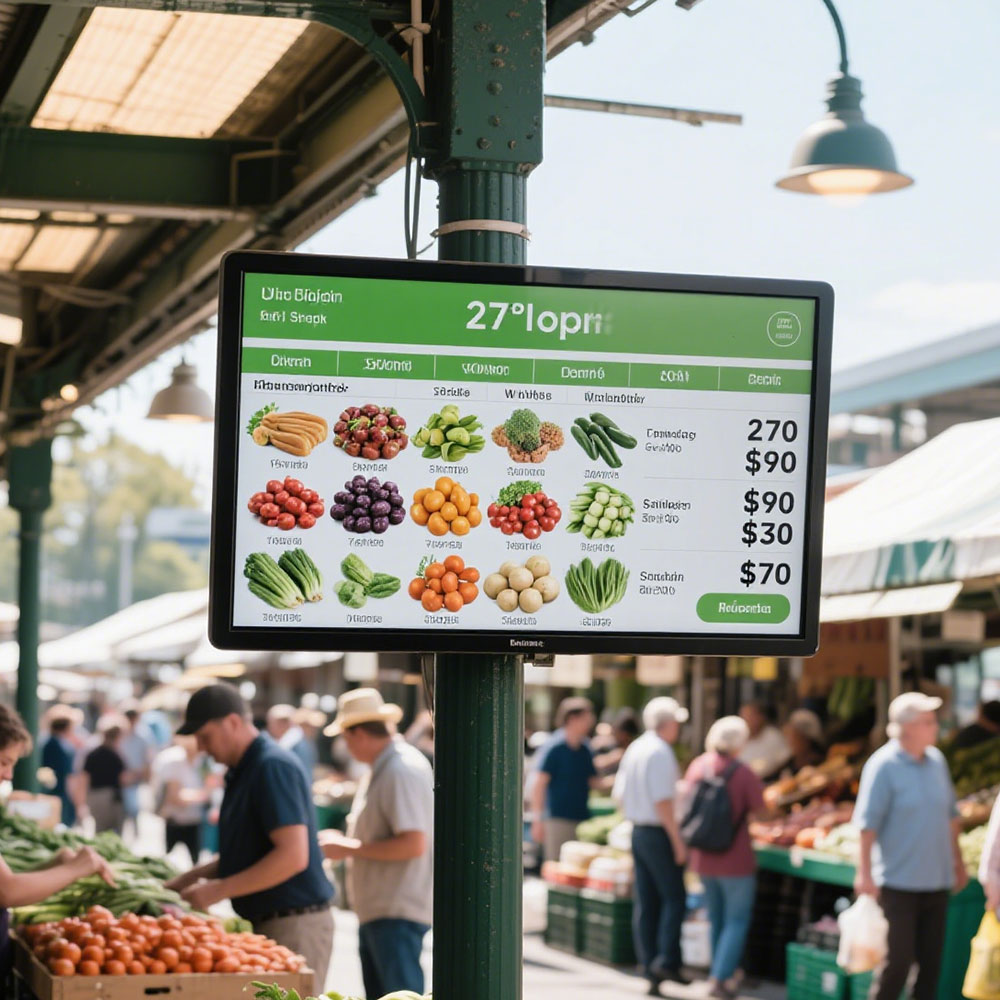When integrating outdoor LCD screens into industrial equipment, overseas manufacturers and distributors must prioritize durability, visibility, and compatibility with harsh environments. Unlike indoor displays, outdoor LCDs are exposed to extreme temperatures, humidity, UV radiation, and mechanical stress—conditions that demand engineered solutions. According to the IEC 60068 standards for environmental testing, reliable outdoor displays must withstand temperature ranges from -30°C to +70°C, making thermal management a non-negotiable design factor.
A critical specification is brightness—typically measured in nits. For full sunlight readability, screens must exceed 5,000 nits (some applications require up to 10,000 nits). This ensures visibility under direct solar exposure, a key requirement for mining, construction, and agricultural machinery. Additionally, anti-glare coatings and polarized filters reduce reflection while enhancing contrast ratios, which improves operator clarity in dynamic lighting conditions.
Another essential consideration is IP rating. An IP65 or higher rating indicates protection against dust ingress and water jets, crucial for equipment operating in wet or dusty environments such as ports, oil rigs, or food processing plants. Our team has successfully deployed 200+ outdoor LCD units in offshore wind farms using IP68-rated panels—proving long-term resilience even in saltwater spray conditions.

For integration into existing control systems, compatibility with standard interfaces like HDMI, LVDS, or RS-485 is vital. Custom firmware support allows seamless communication between the display and PLCs or SCADA systems—a feature increasingly requested by European and North American OEMs. Furthermore, power efficiency matters: low-power consumption models (under 30W) reduce operational costs and align with Ecodesign directives in EU markets.
Finally, certification compliance—such as CE, FCC, and RoHS—is mandatory for global distribution. We’ve helped clients avoid costly delays by ensuring all components meet regional regulatory requirements before shipment. Choosing an outdoor LCD screen isn’t just about specs—it’s about lifecycle value, ease of maintenance, and technical support. Partnering with experienced suppliers who offer 5-year warranties and remote diagnostics can significantly reduce downtime in mission-critical operations.







